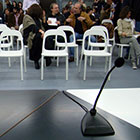04-14/3/2014, Volos
See the poster.
"The Truth of Photography"
Lecture by Iraklis Papaioannou.
Wednesday 29th of January 2014, at 8:45 p.m. Amphitheater of the Department of Architecture, Uth.
"Political Representations"
Lecture by Demetri Sevastakis.
Tuesday 28th of January 2014, at 8:45 p.m. Amphitheater of the Department of Architecture, Uth.
"The extended representation of landscape"
Lecture by Valerio Morabito.
Thursday 23rd of January 2014, at 8:45 p.m.
Amphitheater of the Department of Architecture, Uth.
Read the poster.
"Readings of Seeing"
Lecture by Zissis Sarikas.
Wednesday 22nd of January 2014, at 8:45 p.m.
Amphitheater of the Department of Architecture, Uth.
Amphitheater of the Department of Architecture, Uth.
"The Formalist, the Mathematician, the 'Sacredmediate' and the Intermediate"
Lecture by Demetri Fragos.
Tuesday 21st of January 2014, at 8:45 p.m. Amphitheater of the Department of Architecture, Uth.


